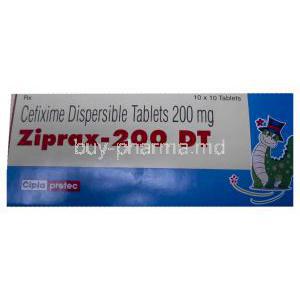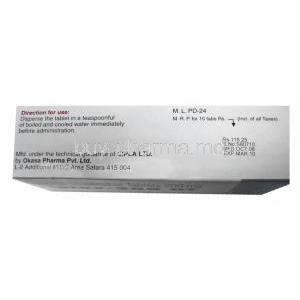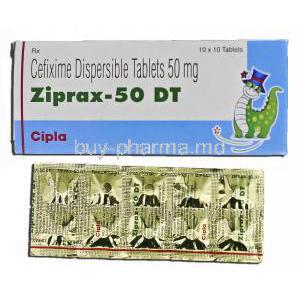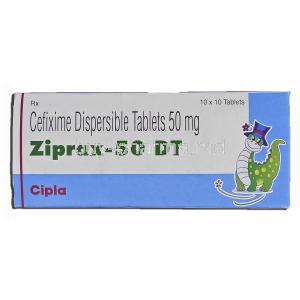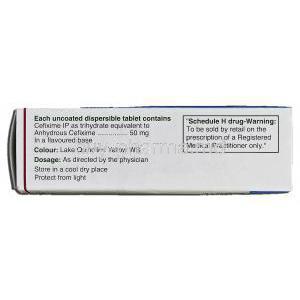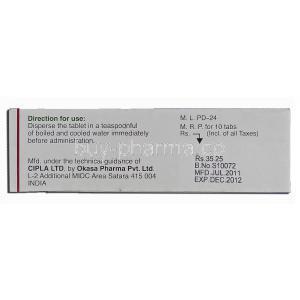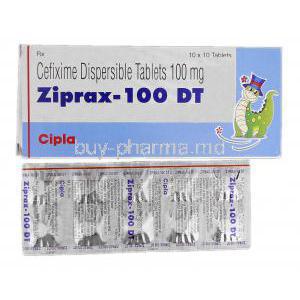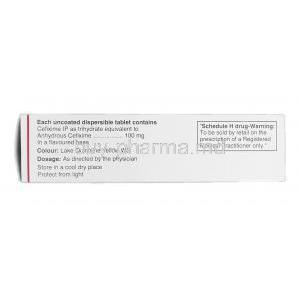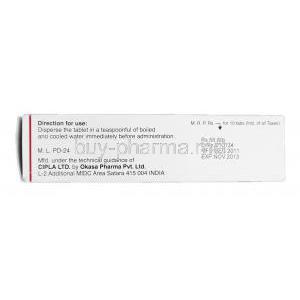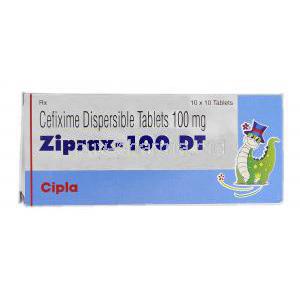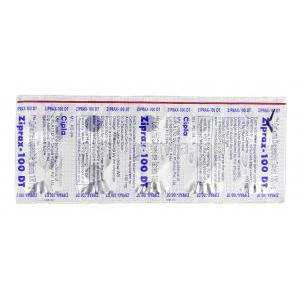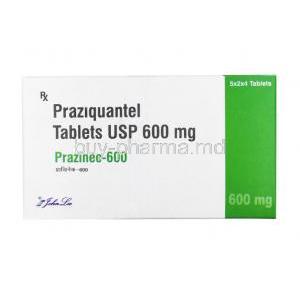Cefixime
- I. Introduction
- II. Uses of Cefixime
- III. Off-label Use
- IV. How Cefixime Works
- V. Dosage and Administration
- VI. Composition
- VII. Side Effects
- VIII. Interaction
- IX. Warning
- X. Contraindication
- XI. Careful Administration
- XII. Important Precautions
- XIII. Administration to Specific Populations
- XIV. Overdosage
- XV. Handling Precautions
- XVI. Storage
- XVII. Conclusion
I. Introduction
A Brief Overview of Cefixime; Cefixime, a type of antibiotic known as a third-generation cephalosporin, was first developed in 1983. It gained recognition for its ability to combat strains resistant to beta-lactamase enzymes. Classification and How it Works; Cefixime belongs to the group of cephalosporin antibiotics. Its primary mode of action is inhibiting the synthesis of cell walls, which ultimately leads to the death of susceptible bacteria. FDA Approval and Recommended Uses; The FDA granted approval, for Cefixime in 1986. It is primarily prescribed for treating infections, particularly those caused by susceptible strains of Enterobacteriaceae and other Gram-negative bacteria.
II. Uses of Cefixime
Treatment of Bacterial Infections; It is widely used to combat various bacterial infections due to its ability to target a broad range of bacteria. Respiratory Tract Infections; These include conditions like bronchitis and pneumonia, often caused by Streptococcus pneumoniae and Haemophilus influenzae. Urinary Tract Infections, Such as cystitis and pyelonephritis, commonly occur due to Escherichia coli. Skin and Soft Tissue Infections encompass conditions like impetigo, cellulitis, and abscesses. Prophylactic Use in Surgical Procedures: it is sometimes given before procedures as a preventive measure against postoperative infections, particularly for patients with known penicillin allergies.
References:
1: Cefixime: Uses, Dosage, Side Effects & Warnings - Drugs.com 2: Cefixime - Wikipedia 3: Cefixime: MedlinePlus Drug Information 4: cefixime (Suprax): Antibiotic Side Effects, Dosage & Uses - MedicineNet
III. Off-label Use
In the treatment of Lyme disease, Cefixime may be considered as an option when other antibiotics cannot be used. When managing Helicobacter Pylori, Cefixime can be included in a treatment plan to address the infection associated with the development of ulcers. Cefixime has been utilized as an alternative treatment option for patients with febrile neutropenia who cannot take first-line medications.
References:
1: Cefixime - Wikipedia 2: Cefixime: MedlinePlus Drug Information 3: Lyme Disease Treatment & Management: Approach Considerations … : Treatment | Lyme Disease | CDC : Treatment and prevention of neutropenic fever syndromes in … - UpToDate : Overview of neutropenic fever syndromes - UpToDate : Febrile Neutropenia | Oncology | JAMA Oncology | JAMA Network
IV. How Cefixime Works
Cefixime works by binding to penicillin-binding proteins in the cell wall, which hinders the production of peptidoglycan. This component is crucial for the cell wall's structure, and when its synthesis is disrupted, it leads to cell breakdown and eventual death. Cefixime is effective against Gram-negative and Gram-positive bacteria but is primarily used against Enterobacteriaceae. It's essential to conduct sensitivity testing before starting treatment as resistance can develop through mechanisms, including the production of beta-lactamase enzymes.
V. Dosage and Administration
Typical Dosage Recommendations; For individuals 12 years old or older, the regular daily dose is usually 400 mg. However, this may vary depending on the type and severity of the infection. It's important to note that patients with kidney or liver problems may require adjustments to their dosage, which often involves monitoring. Cefixime comes in forms such as tablets (200 mg, 400 mg) and oral suspension (100 mg/5 mL, 200 mg/5 mL).
VI. Composition
Cefixime is the component used for its therapeutic effects in this medication. The formulation also contains ingredients like cellulose, lactose, magnesium stearate, and various compounds that may differ depending on the manufacturer. Regarding options for taking this medication, it is commonly found in tablet form or as a suspension to make it easier for patients to accept and comply with their prescribed treatment.
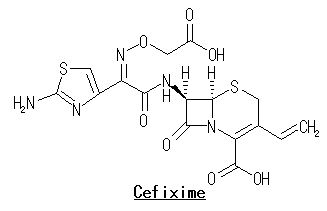
VII. Side Effects
Side Effects; You may experience some discomfort in your stomach, headaches, or dizziness. Effects on the Digestive System; This can include symptoms like diarrhea feeling nauseous, or experiencing abdominal pain. Reactions to Allergies; Some people may develop a rash or even share a severe allergic reaction known as anaphylaxis. Impacts on Blood Cells; Although rare, there have been cases of platelet count (thrombocytopenia) or low white blood cell count (leukopenia). Adverse Severe Effects; While uncommon, there is a possibility of experiencing reactions. One example is Stevens-Johnson Syndrome, a severe skin reaction requiring immediate medical attention. Clostridium Difficile Associated Diarrhea; This is a painful condition that can occur following antibiotic treatment. Cefixime is an antibiotic that has been widely used. However, it should be used only under the guidance of a healthcare professional.
VIII. Interaction
Drug interactions; It is essential to be aware that Cefixime can interact with other medications, potentially changing their effects or increasing side effects. If you are taking warfarin, it is necessary to monitor your INR levels, as Cefixime can enhance the anticoagulant effect of warfarin. Additionally, when taking Cefixime alongside contraceptives, please note that it may reduce their effectiveness, so it's advisable to consider additional contraceptive measures. Regarding food interactions, it's worth mentioning that Cefiximes absorption is not significantly affected by food. This makes it a convenient and versatile medication in terms of administration. However, it's essential to be cautious about laboratory test results while taking Cefixime. This medication can sometimes produce positive outcomes in specific diabetic urine testing products and direct Coombs tests.
IX. Warning
There is a possibility that Cefixime might cause the growth of susceptible organisms leading to secondary infections like oral thrush or vaginal yeast infections. Patients with a history of penicillin allergy need to be cautious when taking Cefixime due to the potential for cross-reactivity. Patients with renal function will require dose adjustment and close clinical monitoring.
X. Contraindication
If someone has a known sensitivity or allergic reaction to Cefixime or any other cephalosporin antibiotics, it is not recommended to use Cefixime. Additionally, if a patient has experienced colitis due to antibiotic usage in the past, it is best to avoid using Cefixime.
XI. Careful Administration
Monitoring and Adjusting Doses; It is essential for patients with kidney problems to have their dosage carefully adjusted and be closely observed by healthcare professionals. The significance of completing the prescribed course of medication should be emphasized to patients even if they start feeling better before the drug is ultimately used up.
XII. Important Precautions
There is a possibility that taking Cefixime could increase the chance of getting a Clostridium infection, causing symptoms like mild diarrhea or even severe colitis. It's important to note that misusing Cefixime might contribute to developing drug bacteria, a significant concern for public health.
XIII. Administration to Specific Populations
For patients, it is recommended to be cautious with cefixime dosing and regularly monitor their renal function. Elderly individuals are often more vulnerable to experiencing side effects caused by medications. Regarding women and nursing mothers, cefixime should only be used if necessary during pregnancy, and caution should be exercised when administering it to breastfeeding women. As for children, cefixime has been proven to be safe for them. It is essential to follow pediatric guidance when using it strictly.
XIV. Overdosage
Signs and Symptoms of Overdose; Although uncommon, an overdose can cause symptoms related to the system and digestive system. When managing and treating an overdose, the focus is mostly on providing care, which may involve procedures like gastric lavage and hemodialysis.

XV. Handling Precautions
To ensure safety, it is essential to keep Cefixime from children and pets. Additionally, make sure to dispose of any expired medication properly. It is recommended not to mix Cefixime with drugs, in solutions as there may be compatibility issues.
XVI. Storage
To ensure the quality of Cefixime, it is essential to store it at a controlled room temperature and protect it from moisture. After reconstitution, the Cefixime suspension should be used within a timeframe, typically around 14 days. Patients must avoid using Cefixime beyond its expiration date.
XVII. Conclusion
Key Points Summary; Cefixime is a versatile third-generation cephalosporin that provides broad-spectrum activity against many bacterial pathogens. While generally well tolerated, it is essential to administer this medication cautiously due to its contraindications and potential side effects. Current Role in Treatment Guidelines; With the increasing challenge of resistance, the significance of Cefixime in treatment protocols remains critical but may evolve. This highlights the importance of the use of antimicrobials. Emerging Research and Future Directions; Ongoing studies on Cefixime aim to optimize its usage and minimize resistance development. Explore potential expansion of its indications.


